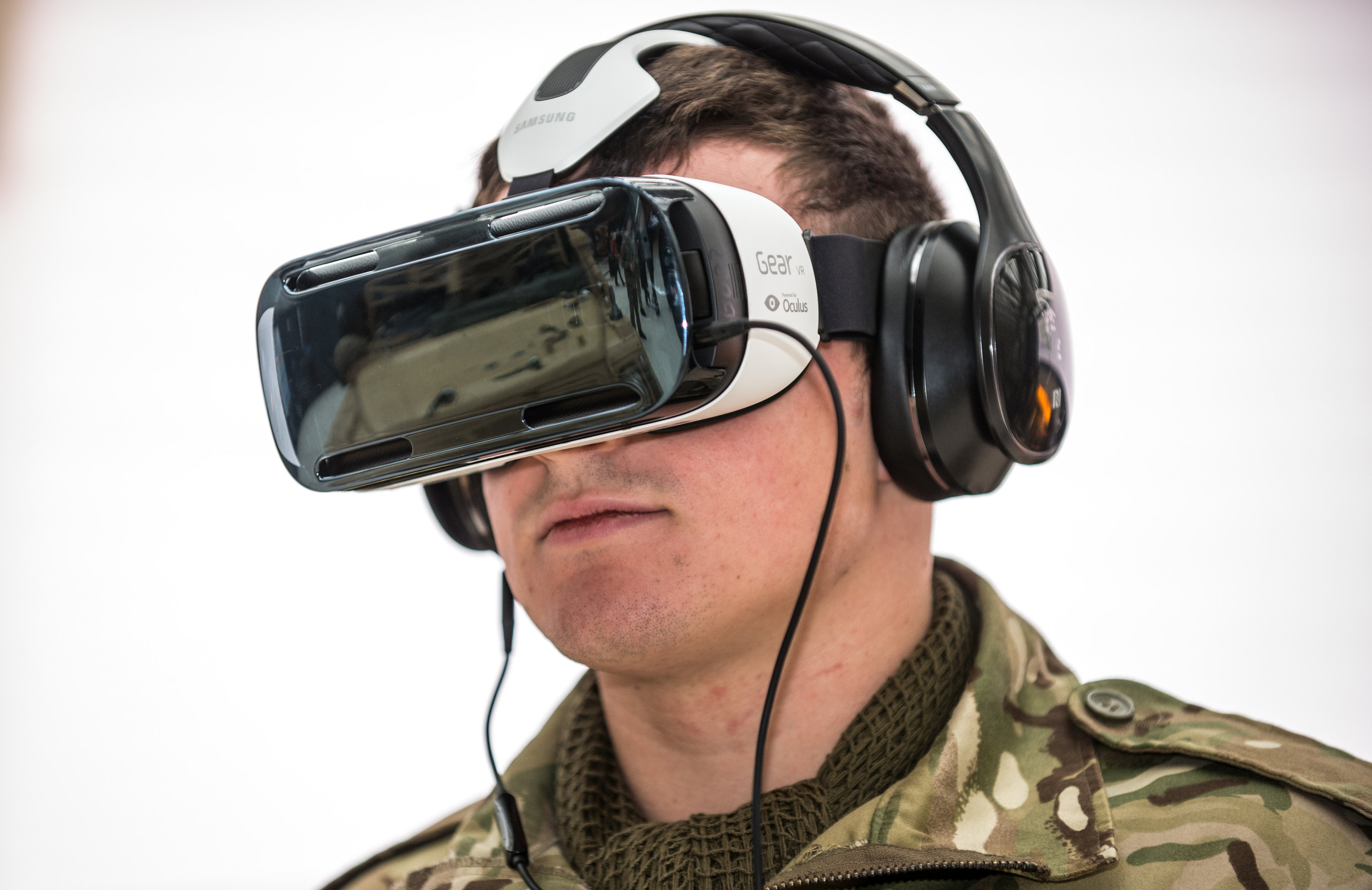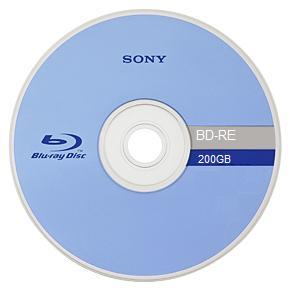|
Glasstron
Glasstron was a series of portable head-mounted displays released by Sony, initially introduced in 1996 with the model PLM-50. The products featured two LCD screens and two earphones for video and audio respectively. The products are no longer manufactured nor supported by Sony. The Glasstron was not the first head-mounted display by Sony, with the Visortron being a previous exhibited unit. The Sony HMZ-T1 can be considered a successor to Glasstron. The head-mounted display developed for Sony during the mid-1990s by Virtual i-o is completely unrelated to the Glasstron. One application of this technology was in the game ''MechWarrior 2'', which permitted users to adopt a visual perspective from inside the cockpit of the craft, using their own eyes as visual and seeing the battlefield through their craft's own cockpit.Tony Sperry. ''Beyond 3D TV'', Lulu Pres, Inc., November 2003. Models Five models were released. Supported video inputs included PC (15 pin, VGA interface), Com ... [...More Info...] [...Related Items...] OR: [Wikipedia] [Google] [Baidu] |
Head-mounted Display
A head-mounted display (HMD) is a display device, worn on the head or as part of a helmet (see helmet-mounted display for aviation applications), that has a small display optic in front of one (monocular HMD) or each eye (binocular vision, binocular HMD). HMDs have many uses including gaming, aviation, engineering, and medicine. Virtual reality headsets are a type of HMD that track 3D position and rotation to provide a virtual environment to the user. 3DOF VR headsets typically use an Inertial measurement unit, IMU for tracking. 6DOF VR headsets typically use sensor fusion from multiple data sources including at least one IMU. An optical head-mounted display (OHMD) is a wearable display that can reflect projected images and allows a user to see through it. Overview A typical HMD has one or two small displays, with lenses and semi-transparent mirrors embedded in eyeglasses (also termed data glasses), a visor, or a helmet. The display units are miniaturized and may include ... [...More Info...] [...Related Items...] OR: [Wikipedia] [Google] [Baidu] |
S-Video
S-Video (also known as separate video, Y/C, and erroneously Super-Video) is an analog video signal format that carries standard-definition video, typically at 525 lines or 625 lines. It encodes video luma and chrominance on two separate channels, achieving higher image quality than composite video which encodes all video information on one channel. It also eliminates several types of visual defects such as dot crawl which commonly occur with composite video. Although it is improved over composite video, S-Video has lower color resolution than component video, which is encoded over three channels. The Atari 800 was the first to introduce separate Chroma/Luma output in late 1979. However, S-Video was not widely adopted until JVC's introduction of the S-VHS (Super-VHS) format in 1987, which is why it is sometimes incorrectly referred to as ''Super-Video''. The S-video format was widely adopted in consumer equipment due to its improvements over composite video. However, it was ... [...More Info...] [...Related Items...] OR: [Wikipedia] [Google] [Baidu] |
Products Introduced In 1996
Product may refer to: Business * Product (business), an item that can be offered to a market to satisfy the desire or need of a customer. * Product (project management), a deliverable or set of deliverables that contribute to a business solution Mathematics * Product (mathematics) Algebra * Direct product Set theory * Cartesian product of sets Group theory * Direct product of groups * Semidirect product * Product of group subsets * Wreath product * Free product * Zappa–Szép product (or knit product), a generalization of the direct and semidirect products Ring theory * Product of rings * Ideal operations, for product of ideals Linear algebra * Scalar multiplication * Matrix multiplication * Inner product, on an inner product space * Exterior product or wedge product * Multiplication of vectors: ** Dot product ** Cross product ** Seven-dimensional cross product ** Triple product, in vector calculus * Tensor product Topology * Product topology Algebraic topology * Cap ... [...More Info...] [...Related Items...] OR: [Wikipedia] [Google] [Baidu] |
Eyewear
Eyewear is a term used to refer to all devices worn over both of a person's eyes, or occasionally a single eye, for one or more of a variety of purposes. Though historically used for vision improvement and correction, eyewear has also evolved into eye protection, for fashion and aesthetic purposes, and starting in the late 20th century, computers and virtual reality. The primary intention of wearing eyewear can vary based on the need or desire of the wearer. Eyewear comes in different forms such as Glasses, Contact lenses, Sunglasses and many more. . Eyewear (such as glasses and contact lenses) helps most people see clearer or read. Eyewear also can be used for protection, such as sunglasses which protect wearers from the Sun's ultraviolet rays which are damaging to the eyes when unprotected, eyepatches to protect injured eyes from further damage, or goggles which protect the wearer's eyes from debris, water and other chemicals. Variants of eyewear can conversely inhibit or disable ... [...More Info...] [...Related Items...] OR: [Wikipedia] [Google] [Baidu] |
Display Technology
A display device is an output device for presentation of information in visual or tactile form (the latter used for example in tactile electronic displays for blind people). When the input information that is supplied has an electrical signal the display is called an '' electronic display''. Common applications for ''electronic visual displays'' are television sets or computer monitors. Types of electronic displays In use These are the technologies used to create the various displays in use today. * Liquid-crystal display (LCD) ** Light-emitting diode (LED) backlit LCD ** Thin-film transistor (TFT) LCD ** Quantum dot (QLED) display * Light-emitting diode (LED) display ** OLED display ** AMOLED display ** Super AMOLED display Segment displays Some displays can show only digits or alphanumeric characters. They are called segment displays, because they are composed of several segments that switch on and off to give appearance of desired glyph. The segments are ... [...More Info...] [...Related Items...] OR: [Wikipedia] [Google] [Baidu] |
Sony Products
is a Japanese multinational conglomerate headquartered at Sony City in Minato, Tokyo, Japan. The Sony Group encompasses various businesses, including Sony Corporation (electronics), Sony Semiconductor Solutions (imaging and sensing), Sony Entertainment (including Sony Pictures and Sony Music Group), Sony Interactive Entertainment (video games), Sony Financial Group, and others. Sony was founded in 1946 as by Masaru Ibuka and Akio Morita. In 1958, the company adopted the name Initially an electronics firm, it gained early recognition for products such as the TR-55 transistor radio and the CV-2000 home video tape recorder, contributing significantly to Japan's post-war economic recovery. After Ibuka's retirement in the 1970s, Morita served as chairman until 1994, overseeing Sony's rise as a global brand recognized for innovation in consumer electronics. Landmark products included the Trinitron color television, the Walkman portable audio player, and the co-dev ... [...More Info...] [...Related Items...] OR: [Wikipedia] [Google] [Baidu] |
SVGA
Super VGA (SVGA) or Extended VGA is a broad term that covers a wide range of computer display standards that extended IBM's Video Graphics Array, VGA specification. When used as shorthand for a resolution, as VGA and XGA often are, SVGA refers to a resolution of 800 × 600. History In the late 1980s, after the release of IBM's VGA, third-party manufacturers began making graphics cards based on its specifications with extended capabilities. As these cards grew in popularity, they began to be referred to as "Super VGA". This term was not an official standard, but a shorthand for enhanced VGA cards which had become common by 1988. The first cards that explicitly used the term were Genoa Systems's SuperVGA and SuperVGA HiRes in 1987. Super VGA cards broke compatibility with the IBM VGA standard, requiring software developers to provide specific Display driver, display drivers and implementations for each card their software could operate on. Initially, the heavy restricti ... [...More Info...] [...Related Items...] OR: [Wikipedia] [Google] [Baidu] |
Video Graphics Array
Video Graphics Array (VGA) is a video display controller and accompanying de facto graphics standard, first introduced with the IBM PS/2 line of computers in 1987, which became ubiquitous in the IBM PC compatible industry within three years. The term can now refer to the computer display standard, the 15-pin D-subminiature VGA connector, or the Graphics display resolution, resolution characteristic of the VGA hardware. VGA was the last IBM graphics standard to which the majority of IBM PC compatible computer manufacturers conformed, making it the Lowest common denominator#Colloquial usage, lowest common denominator that virtually all post-1990 PC graphics hardware can be expected to implement. VGA was adapted into many extended forms by third parties, collectively known as Super VGA, then gave way to custom graphics processing units which, in addition to their proprietary interfaces and capabilities, continue to implement common VGA graphics modes and interfaces to the presen ... [...More Info...] [...Related Items...] OR: [Wikipedia] [Google] [Baidu] |
Composite Video
Composite video, also known as CVBS (composite video baseband signal or color, video, blanking and sync), is an analog video format that combines image information—such as brightness (luminance), color (chrominance), and synchronization, into a single signal transmitted over one channel. It is most commonly used for standard-definition television, and is sometimes referred to as ''SD video''. The signal is typically carried on a yellow RCA connector, with separate connectors used for left and right audio channels. In professional equipment, a BNC connector is often used instead. Other connector types may appear in compact consumer devices like digital cameras. Composite video supports several line resolutions, including 405-line, 525-line, and 625-line interlaced formats. It exists in three major regional variants based on analog color encoding standards: NTSC, PAL, and SECAM. The same format can also be used to transmit monochrome (black-and-white) video. Signal comp ... [...More Info...] [...Related Items...] OR: [Wikipedia] [Google] [Baidu] |
Sony
is a Japanese multinational conglomerate (company), conglomerate headquartered at Sony City in Minato, Tokyo, Japan. The Sony Group encompasses various businesses, including Sony Corporation (electronics), Sony Semiconductor Solutions (imaging and sensing), Sony Entertainment (including Sony Pictures and Sony Music Group), Sony Interactive Entertainment (video games), Sony Financial Group, and others. Sony was founded in 1946 as by Masaru Ibuka and Akio Morita. In 1958, the company adopted the name Initially an electronics firm, it gained early recognition for products such as the TR-55 transistor radio and the CV-2000 home video tape recorder, contributing significantly to Japan's Japanese economic miracle, post-war economic recovery. After Ibuka's retirement in the 1970s, Morita served as chairman until 1994, overseeing Sony's rise as a global brand recognized for innovation in consumer electronics. Landmark products included the Trinitron color television, the Walkma ... [...More Info...] [...Related Items...] OR: [Wikipedia] [Google] [Baidu] |






